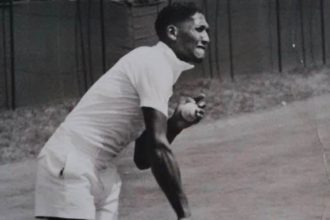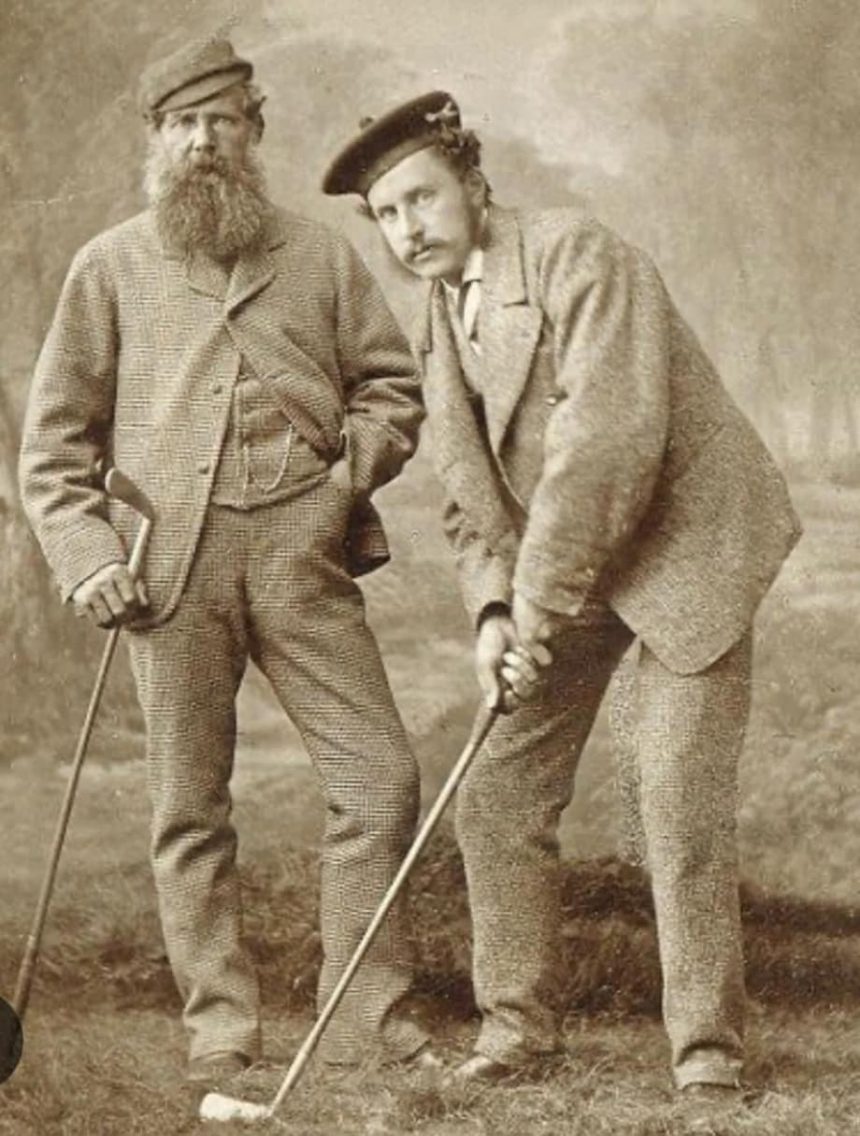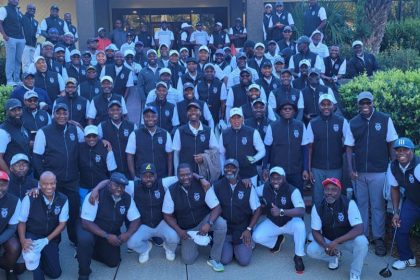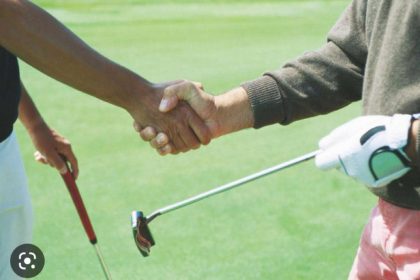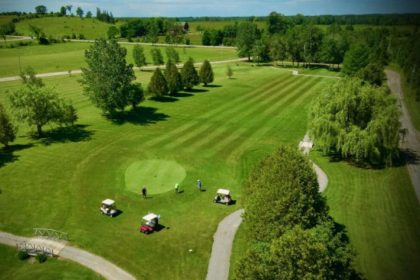Golf is a club and ball sport in which players use various clubs to hit balls into a series of holes on a course. Golf is believed to have originated in Scotland in the 15th century, and the modern game of golf as we know it today has evolved over time, with the rules and equipment used in the sport continuing to change and improve. Golf is a popular sport that is enjoyed by people all over the world, and it has a long and rich history. The Royal and Ancient Golf Club of St. Andrews, which is one of the oldest and most prestigious golf clubs in the world, has played a significant role in the development and standardization of the rules of golf. Today, golf is governed by the Rules of Golf, which are published by the R&A and the United States Golf Association (USGA).
The word “golf” is believed to have originated from the Scottish word “gouf,” which means “to strike or cuff.” The word “golf” first appeared in print in the year 1457 in a Scottish document that refers to “golfe” as a pastime played with a club and ball.
THE GAME
The game is played on a course, which is a large, open area consisting of a series of holes, each with a teeing ground, a fairway, and a green with a flagstick and hole. Players try to hit their balls from the teeing ground into the hole in as few strokes as possible.
Golf is a game in which players use various clubs to hit balls into a series of holes on a course. The object of the game is to get the ball into each hole in as few strokes as possible. Golf is typically played on a course with 18 holes, but it can also be played on a course with 9 or fewer holes.
Each hole on a golf course consists of a teeing ground, a fairway, and a green with a flagstick and hole. Players start each hole by hitting their ball from the teeing ground, which is a marked area where the hole begins. The fairway is the area of the course between the teeing ground and the green that is mowed shorter and is meant to be easier to play from than the rough, which is the longer grass surrounding the fairway. The green is the area of the course where the hole is located, and it is typically mowed much shorter than the fairway and rough. The flagstick is a tall, thin pole with a flag attached to it that is placed in the hole to mark its location.
Golf is played in a variety of formats, including stroke play and match play. In stroke play, the winner is the player who completes the course with the lowest total number of strokes. In match play, the winner is the player or team who wins the most holes out of the total number played.
Golf can be played by people of all ages and skill levels, and it is enjoyed by millions of people around the world. It is a game that requires skill, strategy, and patience, and it can be played recreationally or competitively.
The “par” of a golf course is the number of strokes that a golfer is expected to complete a hole or a round in. The par of a hole is determined by the length of the hole and the difficulty of the terrain. For example, a hole that is longer and has more hazards, such as bunkers and water, is generally given a higher par rating than a shorter hole with fewer hazards.
The total par for a golf course is determined by adding up the par of each individual hole. A standard golf course has a par of 72, which means that a golfer is expected to complete the entire course in 72 strokes or fewer. This total is made up of 4 par 3 holes, 10 par 4 holes, and 4 par 5 holes.
However, it is important to note that the par of a golf course can vary depending on the specific course and the level of difficulty of the holes. Some courses may have a par that is higher or lower than 72.
EQUIPMENT
The standard number of golf clubs that a player is allowed to carry in their bag during a round of golf is 14. This is known as the “bag limit,” and it is governed by the Rules of Golf, which are published by the R&A (Royal and Ancient Golf Club of St. Andrews) and the USGA (United States Golf Association).
Golf clubs are used to hit the golf ball, and each club is designed for a specific purpose, such as hitting the ball a long distance or getting the ball out of a hazard. A typical set of golf clubs includes the following:
- Driver: used to hit the ball long distances off the tee
- Fairway woods: used to hit the ball long distances from the fairway or rough
- Hybrids: combination of a wood and iron, used for versatility and distance
- Irons: used for a variety of shots, including approach shots to the green and shots from bunkers
- Wedges: used for short shots around the green, including bunkers shots and chip shots
- Putter: used to roll the ball on the green towards the hole
Golfers can choose which clubs to put in their bag, and they may carry additional clubs beyond the 14-club limit if they wish (although some Golf clubs do penalize over clubbing). However, they must choose their clubs carefully, as carrying too many clubs can make it more difficult to hit good shots and can slow down the pace of play.
Woods are a type of club in golf that have a slightly smaller head than a driver and are typically used to hit the ball long distances. Woods are so called because the original club heads were made of wood, although most modern woods have club heads made of metal or other materials.
There are several different types of woods that a golfer can choose from, including the driver, which is the club used to hit the ball the longest distances, and the fairway wood, which is a club with a smaller head than a driver and is typically used to hit the ball from the fairway or rough.
Woods are generally the most forgiving of all the clubs, meaning that they are less likely to produce a poor shot when hit off-center. They also have a larger sweet spot, which is the area on the clubface where a ball is most likely to be hit with the maximum amount of power and distance.
Woods are an important part of a golfer’s bag, and they can be used in a variety of situations on the course, including off the tee, from the fairway, and even from the rough.
The average distances that a golfer can hit their clubs in metres will vary depending on their individual strength and swing speed, as well as the specific club being used. Here are some approximate average distances in metres that a golfer with an average swing speed might hit their clubs:
- Driver: 229-247 metres
- 3 wood: 201-221 metres
- 5 wood: 183-203 metres
- 2 iron: 165-183 metres
- 3 iron: 155-173 metres
- 4 iron: 146-165 metres
- 5 iron: 137-155 metres
- 6 iron: 128-146 metres
- 7 iron: 119-137 metres
- 8 iron: 110-128 metres
- 9 iron: 101-119 metres
- Pitching wedge: 91-110 metres
- Sand wedge: 73-91 metres
- Lob wedge: 55-73 metres
It is important to note that these are only approximate distances and will vary from golfer to golfer. Factors such as the golfer’s swing speed, the loft of the club, and the condition of the course can all affect the distance that a golfer can hit their clubs.
GOLF BALLS
According to the Rules of Golf, a golf ball must be spherical and must not be more than 1.68 inches in diameter. It must also meet certain specifications for weight, velocity, and dimensions. Golf balls are typically made of a hard, synthetic material called Surlyn and have a dimple pattern on the surface to help improve lift and reduce drag.
GEAR
In terms of attire (gear), golfers are generally expected to dress in a way that is appropriate for the game of golf and the specific course they are playing on. This usually means wearing golf shoes, slacks or shorts, and a collared shirt. Golfers are also expected to follow certain rules of etiquette on the course, such as replacing their divots and raking bunkers after playing out of them.
It is important to note that specific dress codes and rules of etiquette may vary depending on the specific course and the local customs and traditions of the area. Golfers should always be mindful of and respect the rules and customs of the course they are playing on.


